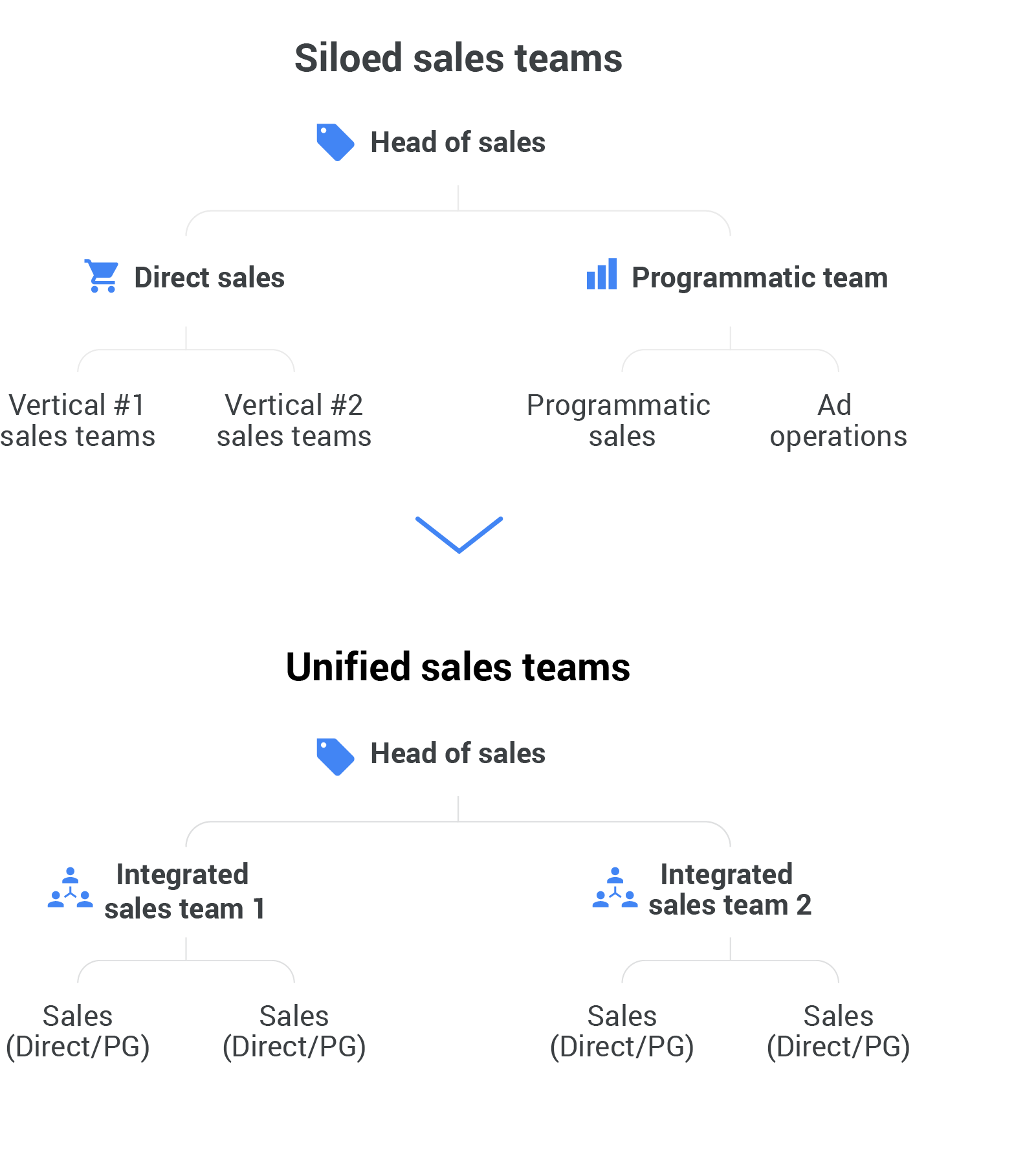As advertisers seek more efficient ways to engage with their audiences online, proactive publishers are finding new ways to use data and technology to increase revenue while driving better performance. Here, Google SEA and India’s Director of Global Partnerships Dushyant Khare and SEA Programmatic Lead Aman Chawla explain how publishers can transform and prepare their teams to embrace programmatic technology.
APAC’s exploding online population has transformed the region’s advertising landscape. Today’s brands are tasked with being relevant to different audiences across platforms throughout the day while staying agile enough to respond to what’s working (and what’s not) in the moment. In this environment, advertisers expect even higher quality insights, more accurate measurement, and transparent reporting.
The number of advertisers turning to programmatic technology tells an intriguing story. The total digital display and video ad markets in APAC are estimated to increase from $14.5B in 2017 to $19B in 2020, with share from programmatic growing from 19% to 36%. As more brands rely on automation to serve personalized creative on a larger scale, publishers have a ripe opportunity to adopt a new, data-driven framework and reap the benefits.

After working with different publishers across India and SEA, we’ve seen firsthand the steps leading organizations are taking to prepare for the programmatic era. Below are four key considerations to ensure your teams are primed and ready to make the most of programmatic technology.
1) Ensure everyone understands the importance of programmatic
With the knowledge that programmatic technology is complex and takes time to comprehend, publishers that have succeeded with programmatic have approached it as a company-wide initiative. It requires long-term commitment across all teams — not just sales, but also departments including IT, finance, and legal — and transformation starts from the top.
To make sure everyone is in a position to understand buyers’ needs, leaders across the organization should actively and deeply invest in trainings on programmatic, foster a test-and-learn culture, and ensure new team members receive mentoring early on. It’s also important to spend time educating new and existing buyers on the benefits of programmatic to drive growth and new opportunities.
Publishers that have succeeded with programmatic have approached it as a company-wide initiative. It requires long-term commitment across all teams — and transformation starts from the top.
Bringing everyone up to speed with new technology and processes takes time. It may seem daunting on the surface, but organizational growth requires continuous education and a commitment to evolution.
2) Unify sales teams to drive more impact
Once everyone is up to speed on the technology, it’s crucial to unify programmatic and direct sales teams. When they’re separated, team members might offer conflicting inventory to the same client or sell the same inventory at a discount. That not only creates confusion and harmful competition but also impacts business in the long term.
Restructuring teams to sell via direct and programmatic has benefits at every level — publishers can drive more opportunities for growth by selling new inventory based on buyers’ needs, and salespeople are able to bolster their personal skills while forming stronger, more consistent relationships with their clients.

For example, rather than keeping its sales teams separate, publisher NDTV ended up boosting its programmatic revenue by 72% by integrating its teams and giving all its clients access to programmatic inventory.
3) Use your data to drive valuable engagement and monetization
Once sales teams are aligned on the same goal, publishers can then shift their focus to how users are interacting with content across their web properties. Publishers can turn analytics into action by building niche audience segments that help advertisers hone in on specific interests, regions, and passions. Ultimately, personalized online experiences lead to higher engagement and revenue.
The key is investing in data analytics and using relevant insights to help clients reach the right audience with precise, tailored messages. A 2019 Deloitte study found news and media organizations that take steps toward digital marketing maturity can optimize cost per thousand impressions (CPM) across both direct and programmatic channels by up to 30%.
There is no one-size-fits-all approach to achieve this. A lot of factors, including business model, region, and editorial strategy, influence how different organizations use their audience data. A data maturity tool we developed with Deloitte is a great way to see how your organization measures up against other organizations so you can plan the best path forward.
4) Go beyond the traditional boundaries of advertising
While digital ads allow advertisers to reach people around the world, direct deals have traditionally been bound by geography. But today’s advertisers are increasingly looking for ways to reach audiences on a global scale with tailored, locally relevant messages.
As automated solutions continue to pick up steam, publishers that invest in their own evolution will be in the best position to meet advertisers’ growing expectations for speed and relevance.
Through programmatic buying, advertisers are able to access inventory in markets around the world and start driving new business outside their local regions. At the same time, programmatic technology allows brands to harness data signals that fuel more timely, personalized, and high-impact creative.
Today’s advertisers are always looking for ways to work smarter and faster and to save resources while still adding value. As automated solutions continue to pick up steam, publishers that invest in their own evolution will be in the best position to meet advertisers’ growing expectations for speed and relevance.
Programmatic transformation is a marathon, not a sprint. It takes time, effort, and a strong commitment to collaboration — both internally and with external stakeholders, advertising clients, and agency partners. By equipping your teams with the tools and know-how to make the most of programmatic technology, your organization will be better positioned to stay ahead of an evolving landscape while offering advertisers the benefits of global inventory, simpler buying, and more transparent measurement and reporting.








